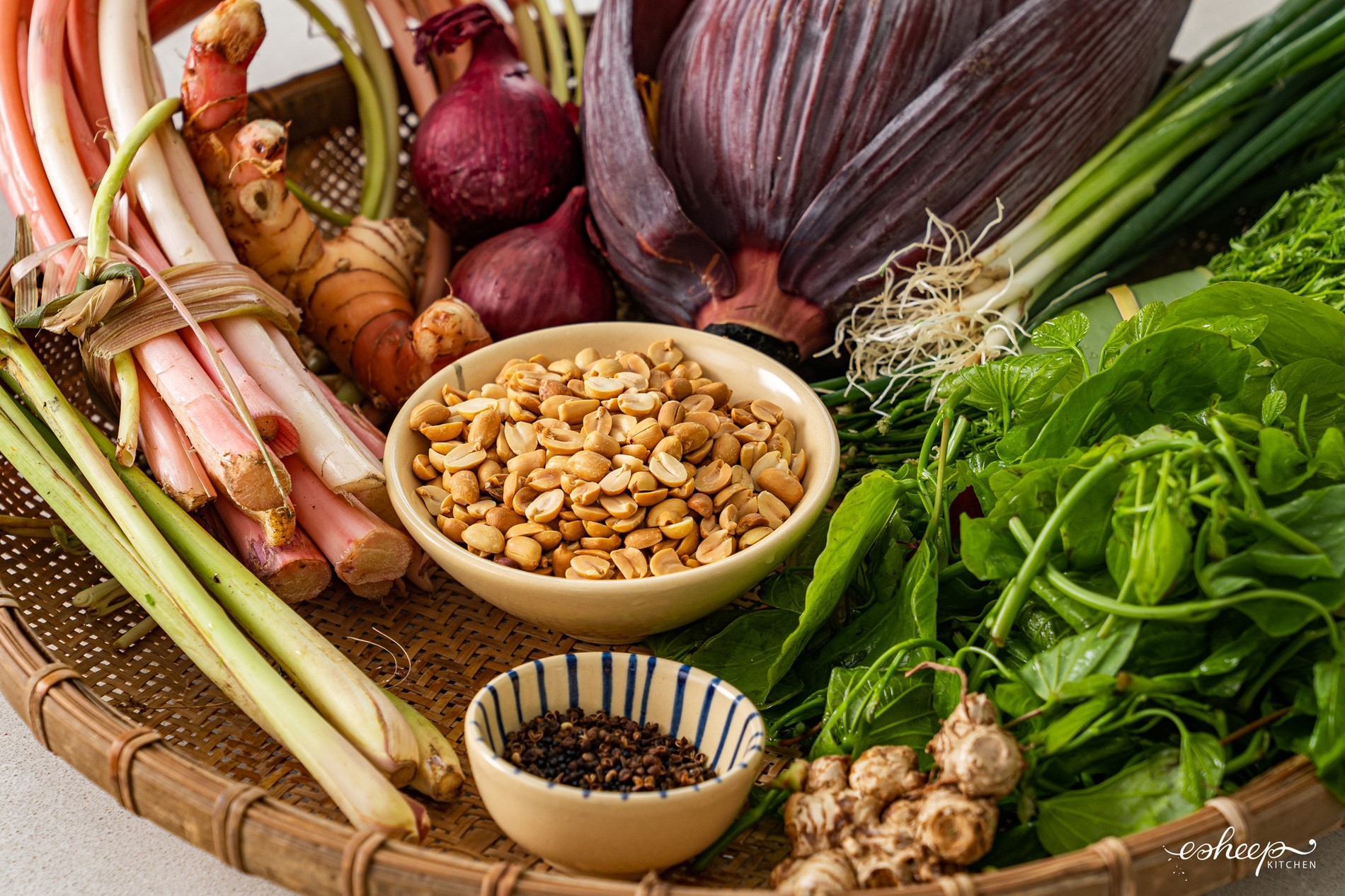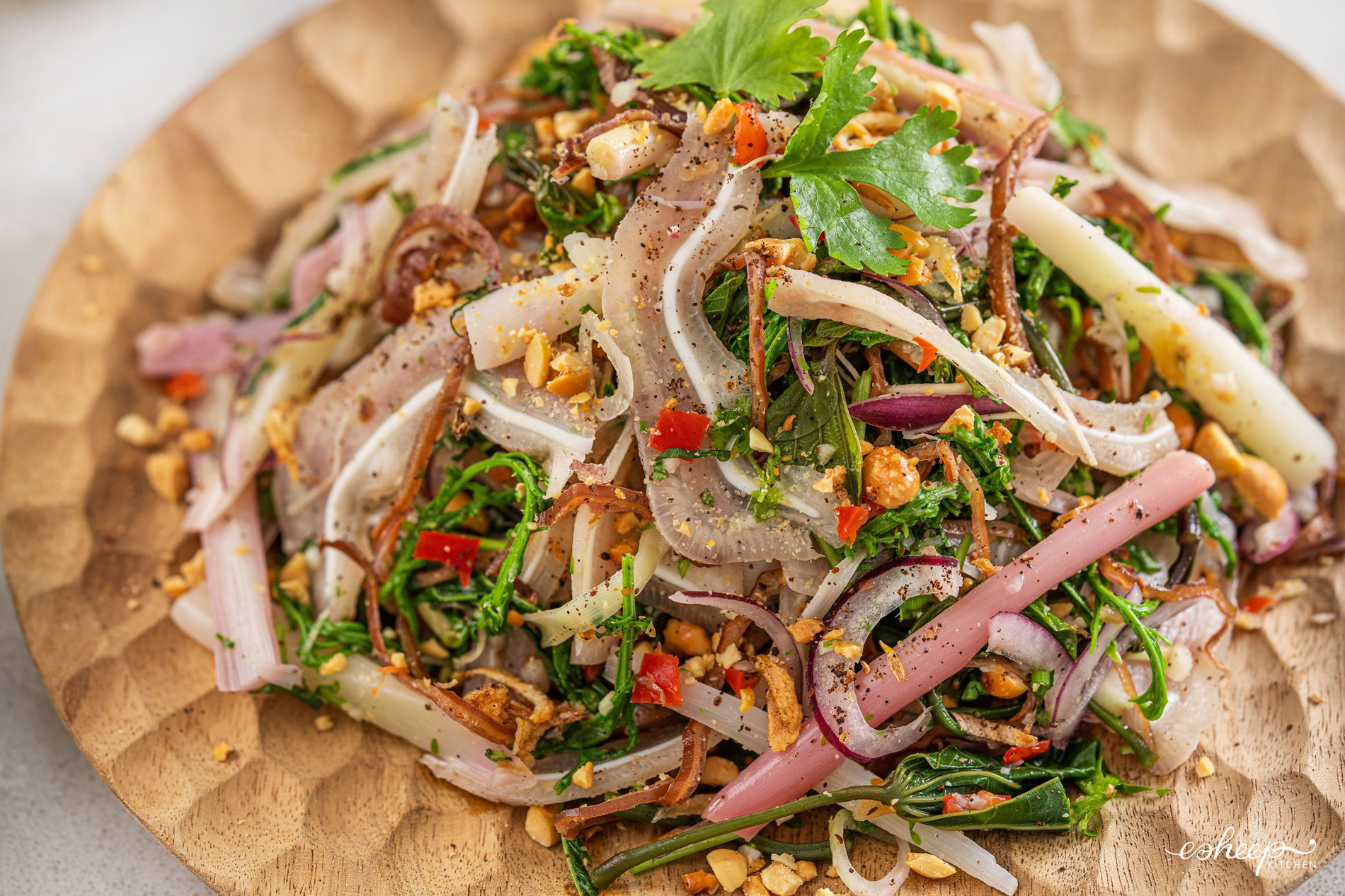In many rural villages across northern Vietnam, galangal (riềng) is a familiar aromatic plant grown primarily for its culinary use. While its rhizome is most commonly used, locals have long known how to creatively utilize other parts of the plant - leaves, flowers, and stems - in cooking.
For instance, galangal leaves are crushed to extract juice used to soak sticky rice or prepare bánh chưng, giving the dish a natural green hue. Even the flowers can be added to meals.
Most notably, galangal sprouts - known as “măng riềng” or “nõn riềng” - are considered a delicacy in some northern regions. These tender young shoots sprouting from the plant’s base are a signature ingredient in traditional dishes.
In Dien Bien province, particularly among the Thai ethnic community, galangal sprouts are regarded as a culinary treasure.
According to Vu Lien, a resident of Dien Bien City, galangal sprouts grow year-round, but they’re most abundant in early spring, mid-summer, and early autumn. During these periods, locals gather the young galangal shoots, peeling away the outer layers to reveal the tender, pale pink core.
Regarded as a naturally clean vegetable, galangal sprouts are widely used in home cooking.
With their crisp texture, subtly sweet taste, spicy undertones, and distinct aroma, galangal sprouts are most often used in salads and mixed vegetable dishes - an everyday component in meals among Thai families in Dien Bien.
Lien shared that the best sprouts for salads are those that have not yet unfurled into full leaves or have only sprouted two to three small leaves. These resemble young asparagus, pointed at the tip, with a faint pink hue.
After harvesting, the tough outer skin is carefully peeled away to reveal the tender core. Though this task may sound simple, it requires skillful hands to retain both the core and the young peel at the tip. Once prepped, the sprouts are cut into short pieces and incorporated into a variety of dishes.
Caption: Galangal sprout salad is a unique regional delicacy, often combined with wild herbs. Photo: Esheep Kitchen
Among the Thai community, galangal sprouts are often mixed with familiar ingredients such as cassava leaves, stinkvine, ramie leaves, wild eggplant, papaya flowers, or other kinds of bamboo shoots to enrich the flavor.
One of the most beloved versions is a salad of galangal sprouts, wild eggplant, and cassava leaves.
Lien noted that young cassava leaves should be plump and coated with a soft fuzz. After harvesting, they are soaked briefly and boiled, then drained. Wild eggplant and galangal sprouts are lightly blanched, with the sprouts then plunged into cold water to preserve their crunch. They're sliced thinly before being tossed with the other ingredients in a sweet and tangy fish sauce dressing, along with fresh herbs.
Despite its simplicity and use of humble ingredients, the dish delivers unexpectedly bold flavors. The galangal sprouts are cool, crisp, slightly sweet and peppery, harmonizing beautifully with the other components.
Beyond salads, galangal sprouts are also stir-fried with garlic, braised with fish, or cooked into soups. Each preparation highlights a different facet of their flavor, offering a fresh and distinctive culinary experience for visitors.
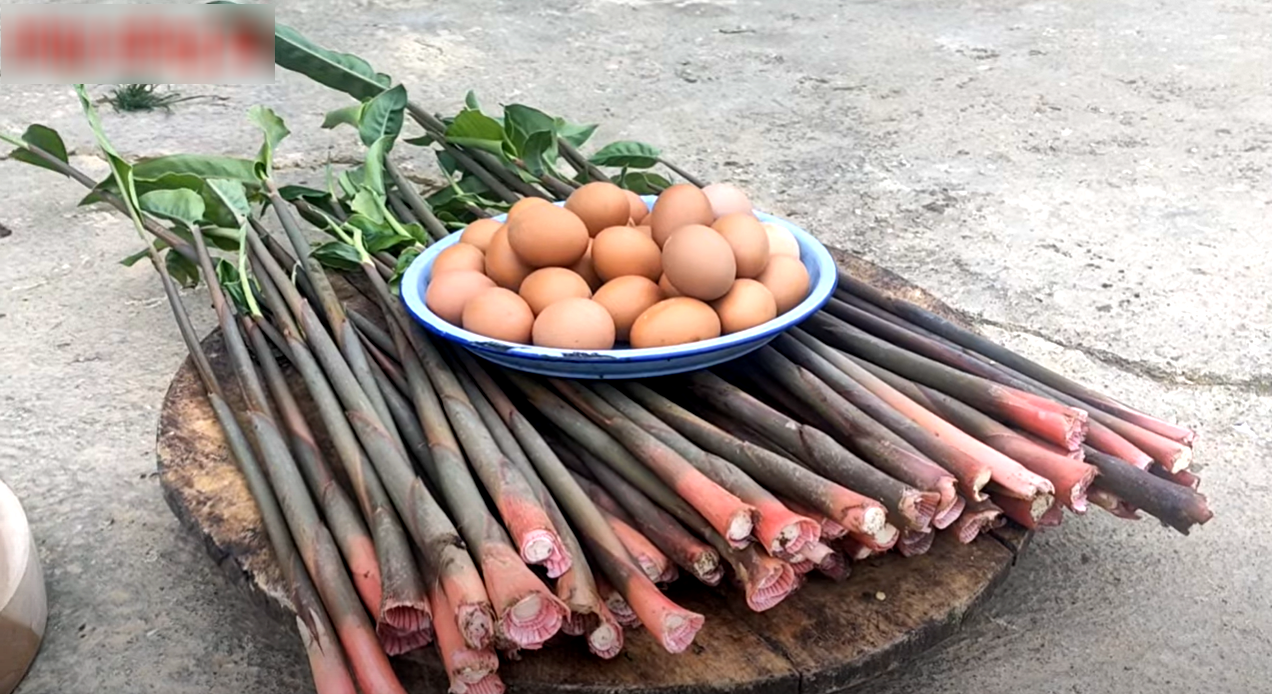
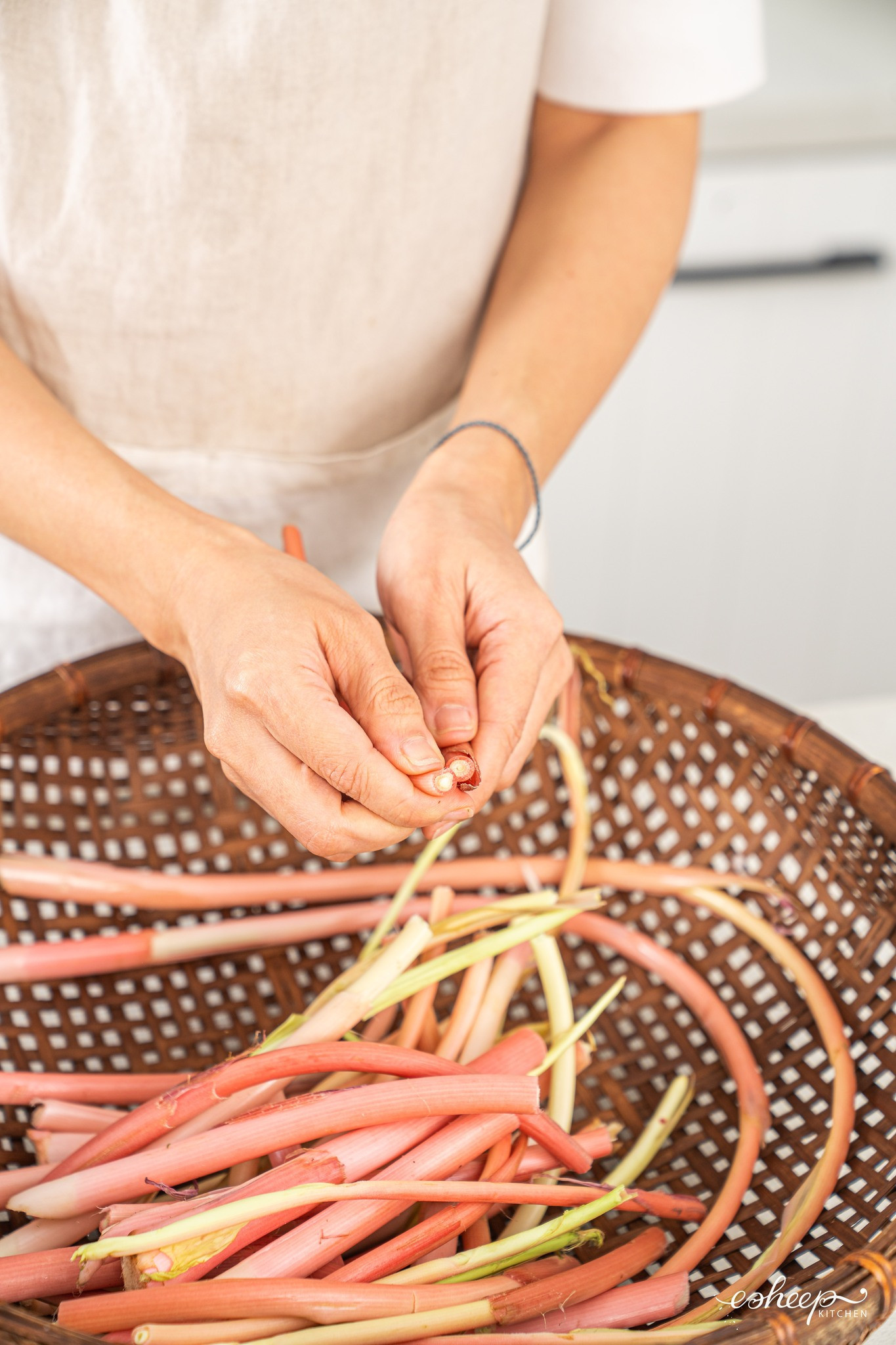 |
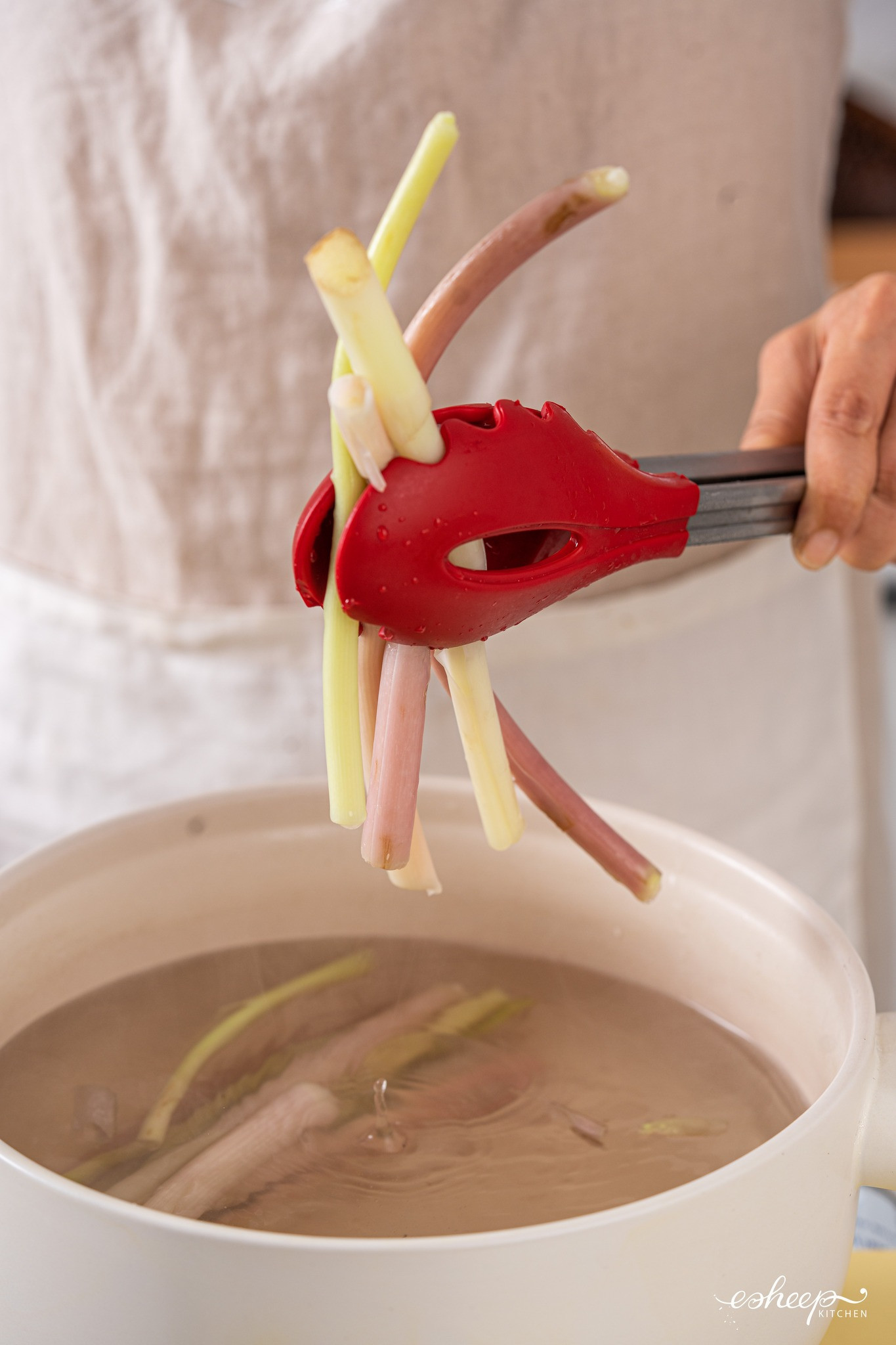 |
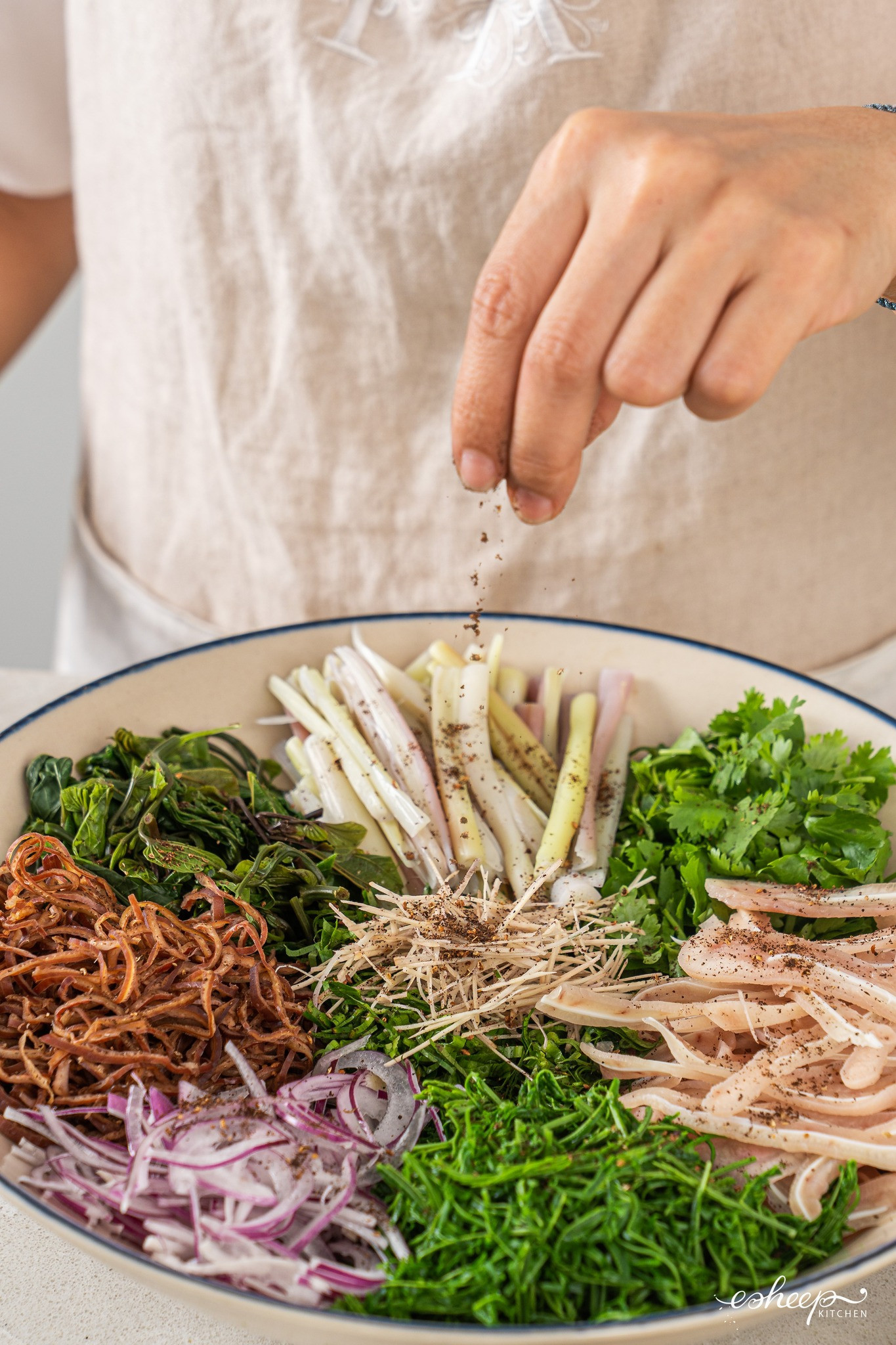 |
